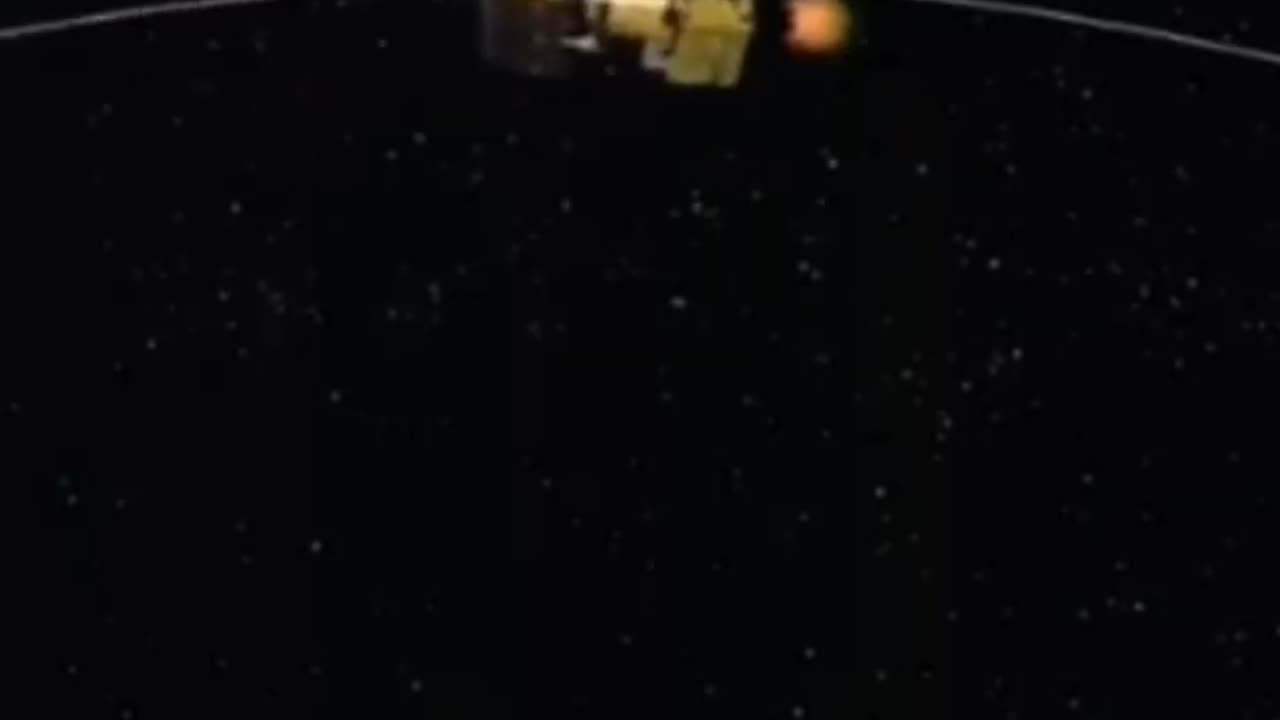Premium Only Content

Chandrayaan 3 soft landing on moon
Chandrayaan 3 soft landing on moon, proud for Indian , space mission, successful.
Chandrayaan-3 is the third of an ongoing series of outer space missions by the Indian Space Research Organization (ISRO) for the exploration of the Moon. The program incorporates a lunar orbiter, an impactor, a soft lander and a rover spacecraft.
The lunar South Pole region holds particular interest for scientific exploration due to studies that show large amounts of ice there. Mountainous terrain and unpredictable lighting conditions not only protect the ice from melting, but also make landing scientific probes there a challenging undertaking. This ice could contain solid-state compounds that would normally melt under warmer conditions elsewhere on the Moon, compounds which could provide insight into lunar, Earth, and Solar System history. Ice could also be used as a source of drinking water and hydrogen for fuel and oxygen for future manned missions and outposts.[15][16]
The European Space Tracking network (ESTRACK), operated by the European Space Agency (ESA), is supporting the mission. Under a new cross-support arrangement, ESA tracking support could be provided for upcoming ISRO missions such as those of India's first human spaceflight programme, Gaganyaan, and the Aditya-L1 solar research mission. In return, future ESA missions will receive similar support from ISRO's own tracking stations.[17]Chandrayaan-3 is the third of an ongoing series of outer space missions by the Indian Space Research Organization (ISRO) for the exploration of the Moon. The program incorporates a lunar orbiter, an impactor, a soft lander and a rover spacecraft.
The lunar South Pole region holds particular interest for scientific exploration due to studies that show large amounts of ice there. Mountainous terrain and unpredictable lighting conditions not only protect the ice from melting, but also make landing scientific probes there a challenging undertaking. This ice could contain solid-state compounds that would normally melt under warmer conditions elsewhere on the Moon, compounds which could provide insight into lunar, Earth, and Solar System history. Ice could also be used as a source of drinking water and hydrogen for fuel and oxygen for future manned missions and outposts.[15][16]
The European Space Tracking network (ESTRACK), operated by the European Space Agency (ESA), is supporting the mission. Under a new cross-support arrangement, ESA tracking support could be provided for upcoming ISRO missions such as those of India's first human spaceflight programme, Gaganyaan, and the Aditya-L1 solar research mission. In return, future ESA missions will receive similar support from ISRO's own tracking stations.[17]Chandrayaan-3 is the third of an ongoing series of outer space missions by the Indian Space Research Organization (ISRO) for the exploration of the Moon. The program incorporates a lunar orbiter, an impactor, a soft lander and a rover spacecraft.
The lunar South Pole region holds particular interest for scientific exploration due to studies that show large amounts of ice there. Mountainous terrain and unpredictable lighting conditions not only protect the ice from melting, but also make landing scientific probes there a challenging undertaking. This ice could contain solid-state compounds that would normally melt under warmer conditions elsewhere on the Moon, compounds which could provide insight into lunar, Earth, and Solar System history. Ice could also be used as a source of drinking water and hydrogen for fuel and oxygen for future manned missions and outposts.[15][16]
The European Space Tracking network (ESTRACK), operated by the European Space Agency (ESA), is supporting the mission. Under a new cross-support arrangement, ESA tracking support could be provided for upcoming ISRO missions such as those of India's first human spaceflight programme, Gaganyaan, and the Aditya-L1 solar research mission. In return, future ESA missions will receive similar support from ISRO's own tracking stations.[17]Chandrayaan-3 is the third of an ongoing series of outer space missions by the Indian Space Research Organization (ISRO) for the exploration of the Moon. The program incorporates a lunar orbiter, an impactor, a soft lander and a rover spacecraft.
The lunar South Pole region holds particular interest for scientific exploration due to studies that show large amounts of ice there. Mountainous terrain and unpredictable lighting conditions not only protect the ice from melting, but also make landing scientific probes there a challenging undertaking. This ice could contain solid-state compounds that would normally melt under warmer conditions elsewhere on the Moon, compounds which could provide insight into lunar, Earth, and Solar System history. Ice could also be used as a source of drinking water and hydrogen for fuel and oxygen for future manned missions and outposts.[15][16]
The European Space Tracking network (ESTRACK), operated by the European Space Agency (ESA), is supporting the mission. Under a new cross-support arrangement, ESA tracking support could be provided for upcoming ISRO missions such as those of India's first human spaceflight programme, Gaganyaan, and the Aditya-L1 solar research mission. In return, future ESA missions will receive similar support from ISRO's own tracking stations.[17] Chandrayaan-3 is the third of an ongoing series of outer space missions by the Indian Space Research Organization (ISRO) for the exploration of the Moon. The program incorporates a lunar orbiter, an impactor, a soft lander and a rover spacecraft.
The lunar South Pole region holds particular interest for scientific exploration due to studies that show large amounts of ice there. Mountainous terrain and unpredictable lighting conditions not only protect the ice from melting, but also make landing scientific probes there a challenging undertaking. This ice could contain solid-state compounds that would normally melt under warmer conditions elsewhere on the Moon, compounds which could provide insight into lunar, Earth, and Solar System history. Ice could also be used as a source of drinking water and hydrogen for fuel and oxygen for future manned missions and outposts.[15][16]
The European Space Tracking network (ESTRACK), operated by the European Space Agency (ESA), is supporting the mission. Under a new cross-support arrangement, ESA tracking support could be provided for upcoming ISRO missions such as those of India's first human spaceflight programme, Gaganyaan, and the Aditya-L1 solar research mission. In return, future ESA missions will receive similar support from ISRO's own tracking stations.[17]Chandrayaan-3 is the third of an ongoing series of outer space missions by the Indian Space Research Organization (ISRO) for the exploration of the Moon. The program incorporates a lunar orbiter, an impactor, a soft lander and a rover spacecraft.
The lunar South Pole region holds particular interest for scientific exploration due to studies that show large amounts of ice there. Mountainous terrain and unpredictable lighting conditions not only protect the ice from melting, but also make landing scientific probes there a challenging undertaking. This ice could contain solid-state compounds that would normally melt under warmer conditions elsewhere on the Moon, compounds which could provide insight into lunar, Earth, and Solar System history. Ice could also be used as a source of drinking water and hydrogen for fuel and oxygen for future manned missions and outposts.[15][16]
The European Space Tracking network (ESTRACK), operated by the European Space Agency (ESA), is supporting the mission. Under a new cross-support arrangement, ESA tracking support could be provided for upcoming ISRO missions such as those of India's first human spaceflight programme, Gaganyaan, and the Aditya-L1 solar research mission. In return, future ESA missions will receive similar support from ISRO's own tracking stations.[17]Chandrayaan-3 is the third of an ongoing series of outer space missions by the Indian Space Research Organization (ISRO) for the exploration of the Moon. The program incorporates a lunar orbiter, an impactor, a soft lander and a rover spacecraft.
The lunar South Pole region holds particular interest for scientific exploration due to studies that show large amounts of ice there. Mountainous terrain and unpredictable lighting conditions not only protect the ice from melting, but also make landing scientific probes there a challenging undertaking. This ice could contain solid-state compounds that would normally melt under warmer conditions elsewhere on the Moon, compounds which could provide insight into lunar, Earth, and Solar System history. Ice could also be used as a source of drinking water and hydrogen for fuel and oxygen for future manned missions and outposts.[15][16]
The European Space Tracking network (ESTRACK), operated by the European Space Agency (ESA), is supporting the mission. Under a new cross-support arrangement, ESA tracking support could be provided for upcoming ISRO missions such as those of India's first human spaceflight programme, Gaganyaan, and the Aditya-L1 solar research mission. In return, future ESA missions will receive similar support from ISRO's own tracking stations.[17]Chandrayaan-3 is the third of an ongoing series of outer space missions by the Indian Space Research Organization (ISRO) for the exploration of the Moon. The program incorporates a lunar orbiter, an impactor, a soft lander and a rover spacecraft.
The lunar South Pole region holds particular interest for scientific exploration due to studies that show large amounts of ice there. Mountainous terrain and unpredictable lighting conditions not only protect the ice from melting, but also make landing scientific probes there a challenging undertaking. This ice could contain solid-state compounds that would normally melt under warmer conditions elsewhere on the Moon, compounds which could provide insight into lunar, Earth, and Solar System history. Ice could also be used as a source of drinking water and hydrogen for fuel and oxygen for future manned missions and outposts.[15][16]
The European Space Tracking network (ESTRACK), operated by the European Space Agency (ESA), is supporting the mission. Under a new cross-support arrangement, ESA tracking support could be provided for upcoming ISRO missions such as those of India's first human spaceflight programme, Gaganyaan, and the Aditya-L1 solar research mission. In return, future ESA missions will receive similar support from ISRO's own tracking stations.[17]Chandrayaan-3 is the third of an ongoing series of outer space missions by the Indian Space Research Organization (ISRO) for the exploration of the Moon. The program incorporates a lunar orbiter, an impactor, a soft lander and a rover spacecraft.
The lunar South Pole region holds particular interest for scientific exploration due to studies that show large amounts of ice there. Mountainous terrain and unpredictable lighting conditions not only protect the ice from melting, but also make landing scientific probes there a challenging undertaking. This ice could contain solid-state compounds that would normally melt under warmer conditions elsewhere on the Moon, compounds which could provide insight into lunar, Earth, and Solar System history. Ice could also be used as a source of drinking water and hydrogen for fuel and oxygen for future manned missions and outposts.[15][16]
The European Space Tracking network (ESTRACK), operated by the European Space Agency (ESA), is supporting the mission. Under a new cross-support arrangement, ESA tracking support could be provided for upcoming ISRO missions such as those of India's first human spaceflight programme, Gaganyaan, and the Aditya-L1 solar research mission. In return, future ESA missions will receive similar support from ISRO's own tracking stations.[17]
-
 LIVE
LIVE
Lofi Girl
2 years agoSynthwave Radio 🌌 - beats to chill/game to
282 watching -
 6:48
6:48
Buddy Brown
11 hours ago $8.31 earnedWatch What Happens When you Set up a "Charlie Tent" at HBCU! | Buddy Brown
105K60 -

FreshandFit
12 hours agoObese Black Girls Get Triggered Over THIS...
104K37 -
 2:07:44
2:07:44
Inverted World Live
7 hours agoPentagon Says it Solved UFO Cases, Tyler Robinson "Roommate" Missing | Ep. 113
34.6K15 -
 2:30:00
2:30:00
Badlands Media
13 hours agoDevolution Power Hour Ep. 392: Psyops, Paper Tigers, and the Path to Sovereignty
86.8K14 -
 3:02:08
3:02:08
TimcastIRL
8 hours agoLeftist Terror Attack On ICE In Dallas, Jimmy Kimmel Doubles Down Insulting MAGA | Timcast IRL
344K141 -
 1:17:35
1:17:35
Man in America
13 hours agoIs Starlink RIPPING Us Apart from the Inside Out? w/ Cory Hillis
52.8K18 -
 55:40
55:40
TheSaltyCracker
7 hours agoIdiots Chug Tylenol PT2 ReeEEStream 9-24-25
107K224 -
 5:55:01
5:55:01
Akademiks
8 hours agoYoung Thug Dissing YFN Lucci. Ready to Go back to Jail. Offset vs Cardi b
70.2K4 -
 7:07
7:07
Colion Noir
16 hours agoCalifornia Just Banned All Glocks
61.5K42